
Into the Abyss: Exploring My Love/Hate Relationship with Dark Souls II - Article
by Issa Maki , posted on 24 January 2023 / 4,450 ViewsI seek guidance.
I want to appreciate Dark Souls II on the same level as its predecessor, Demon's Souls, or Bloodborne. Yet every time I open myself up to the possibility, my hopes are dashed by small design quirks that eventually add up to a sum of infuriating disappointment. How can a game that improves on the past in so many intriguing ways be held back by issues that never previously existed? Why does Dark Souls II seem to sabotage any sense of enjoyment it creates, just out of sheer spite against the player? Was this conduct on behalf of the developers justifiable in some way – and possibly even necessary? Prepare to quaff some Estus and burn an effigy or two in our likenesses, for we journey once again to the land of Drangleic.
Historically, I've had little love for Dark Souls II. While critics and early adopters were quick to label it FromSoftware's greatest work yet, I took a step backwards towards Demon's Souls, mastering it enough to achieve the coveted SL1 run. By the time I finally came about the Dark Souls II scene, it was during the Bloodborne/Scholar of the First Sin era – which has pros and cons of its own. This would color my view of Dark Souls II, causing a further investigation into the game's original release. What the visions reveal is the best and worst the Souls series has to offer.
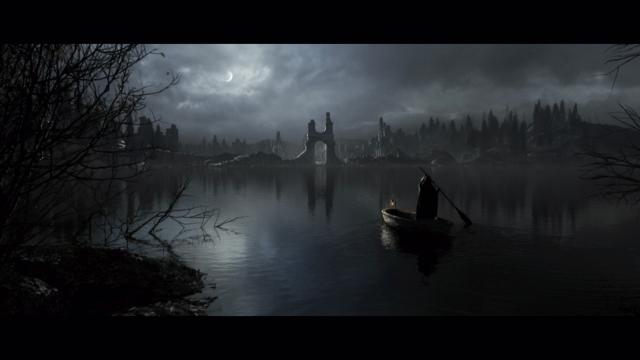
Despite the original review scores, these days it's no secret that Dark Souls II is regarded as the weakest of the bunch – but how often do you hear talk of it being among the strongest? After Elden Ring (which shares the same director/design nonsense), would this be hard to believe? If we approach it from the position that Demon's Souls was underappreciated, but unrefined; that Dark Souls is the most consistent, yet ultimately too easy for its own good; and that Dark Souls III was decent, though uninspired – and shone up by Nioh less than a year later – it might not be as far-fetched as people think. I wouldn't have believed it if I hadn't encountered it directly, but between NG+ playthroughs of Dark Souls II, Dark Souls III, or the likes of Elden Ring and Sekiro (which were allegedly GotY material), what is it that keeps drawing me back to the game made by FromSoftware's B-team?
Right from Dark Souls II's abstract opening and character creation screen, it rubs me the wrong way. This took some time to identify, but when I saw the T-rating from the ESRB on the game box, I realized it had to do with the aesthetics. Best symbolized by the range of exotic hair colors on display, Dark Souls II doesn't 'feel' like I'm playing the proper sequel to Dark Souls. If it's not awkwardly named NPCs like Lucatiel, Shalquior, or Shanalotte, it's the bizarre-looking ogres and 'turtle' knights, alongside a host of 'manimal' refugees from The Island of Doctor Moreau. One doesn't search for reasons to actively dislike Dark Souls II, they're more than happy to come find you at every inconvenience.
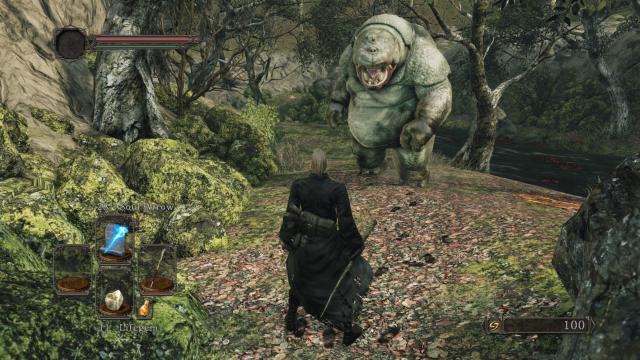
Especially when it comes to the Scholar of the First Sin edition, there are design choices that deliberately go against the rules prior entries established. Worse is that the game goes out of its way to destroy every pre-conceived notion the player has – for no reason than to disrespect them in the name of 'difficulty'. Dark Souls II is when FromSoftware stopped adhering to semblances of fairness or honor, a trait that clearly persisted into Elden Ring.
It's impossible to find a good spot to carve into Dark Souls II's issues, but let's start with the changes made to various frame data – especially when it comes to invulnerability (i-frames for short), as these are the most jarring to both newcomers and series veterans.
In Demon's and Dark Souls, interacting with the environment in various ways (activating levers, passing through 'fog gates' into boss arenas, etc.) granted the player brief moments of invincibility to ensure the completion of a given action. Many of these have been removed, leaving one exposed when they're most vulnerable. Add to this the increased amount of time it takes to drink Estus and open chests (which can last almost 5 ½ seconds), and basic actions like healing during battle or running to a boss door become arduous, agonizing undertakings.
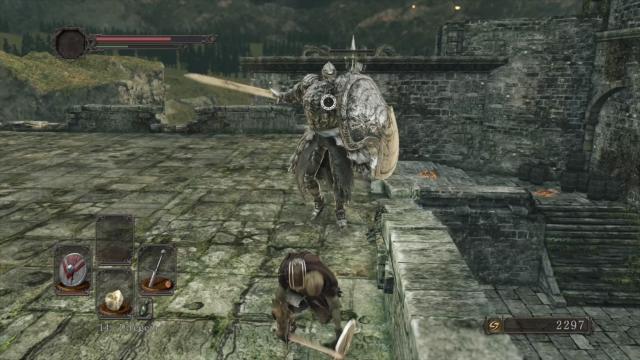
With these come a bevy of recovery frames attached to attack strings. If the damage-decreasing 'deadzones' applied to weapons weren't enough, gone are the days of mashing R1 until the stamina bar depletes. Even with the swift Uchigatana, you're basically looking at 2-3 hits before either hoping the enemy died or that you'll get a chance to dodge the retaliatory strike – and neither will happen. Casters now lose stamina gauge after deploying a spell; a fair change (and one that stuck around), but it takes getting used to. Finally, we have inexplicable revisions made to the movesets of classic weapons such as the Longsword, hamstringing their former versatility. What develops is a large degree of sluggishness that punishes offensive tactics.
That's just the start. Upon death, characters now have a portion of their maximum health pool taken away (down to 50%); a fact to keep in mind as invasions can now occur even while Hollowed. Arrows shot by enemies appear to track outside of acceptable ranges, many of whom aggro based on a player's proximity or location, as opposed to using their 'senses' to detect them. Replete throughout SotFS are what I refer to as 'Benny Hill' moments, where explorers are suddenly besieged by over half a dozen foes, creating comical-looking trains that give chase throughout the level. And in a massive slap to the face, bosses now survive M.A.D. scenarios; a rare occurrence, but something the game has in its back pocket that wasn't there before. Don't even get me started on the fake NPC invaders like Armorer Dennis or Forlorn, who are usually more difficult than the bosses of the areas they inhabit.
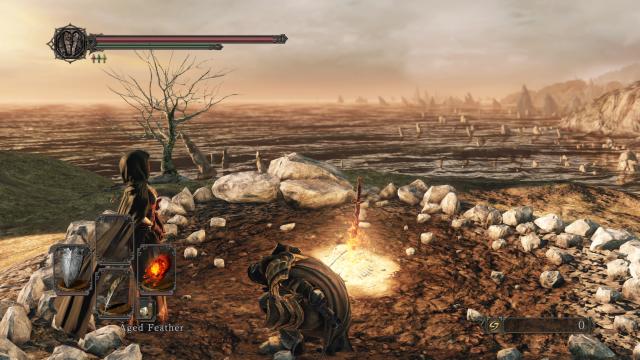
Now after digging a hole that deep, even I don't think I'm climbing out of this one. Trying to argue that Dark Souls II could be among the best in the series after faithfully demonstrating the reasons why it's the worst might come off as backwards – just hear me out. Pointing out its flaws is easy enough to do, yet a deeper analysis reveals a number of unique factors that make the game stand on its own. Yes, many of the changes are against the player and stretch the boundaries of fair play, but in doing so create a complex and more thoughtful experience than anything that has come out of FromSoftware before or since.
One of the more compelling arguments in Dark Souls II's favor is the fact that there are two versions to master. And while the geography is essentially the same, there's a significant difference in enemy placement, AI behavior, item locations, progress routes, and even boss tactics. For example: with the Staff of Wisdom having been moved from Dragon's Shrine (an endgame location) to Brightstone Cove Tseldora (roughly the 35%-40% mark, if not earlier), mage builds become significantly stronger in Scholar of the First Sin far earlier than they could before.
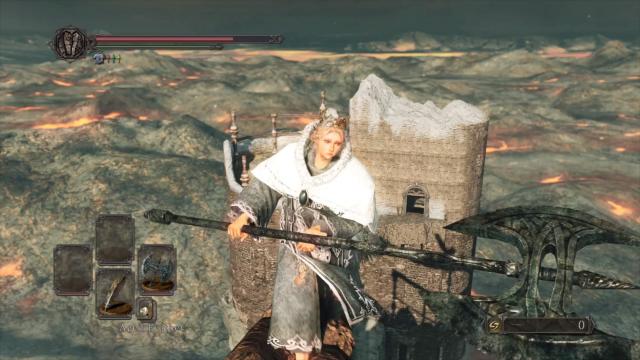
Conversely, in a world populated by fewer enemies who have limited options, melee characters have an easier time in the original release where weapon durability is less of a concern. World navigation and strategies that are viable in one iteration may not be applicable to the other. If you're anything like me and enjoy revisiting games multiple times, this is a dream come true.
Reinforcing this position further, Dark Souls II is not only the most dense in terms of content per square-foot, but also the most customizable. Exclusive to the game are Bonfire Aesetics, consumable items used to change an area to the subsequent difficulty level, resetting all items and enemies (who have a limited spawn rate) in the process. This revelation easily becomes Dark Souls II's masterstroke, allowing players to further tweak builds without having to spend dozens of hours revisiting the entire adventure. Imagine finding a spell or weapon you want multiples of; simply Aesetic the area and grab another one! Magicians and dual-wielders will quickly become addicted to this expedited nature of character development, but one must take care, lest they damage the flow of subsequent playthroughs with insurmountable enemies.
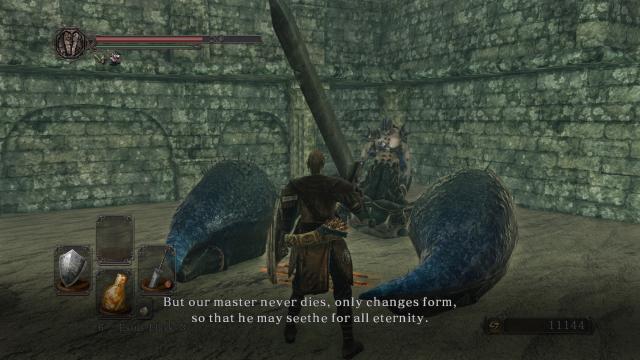
Even the main quest can be tailored to fit the needs of a particular run. To access Drangleic Castle, one must either collect 4 Great Souls or have a 'Soul Memory' (total amount collected) of 1,000,000. But here's the rub: Great Souls don't necessarily need to have come from unique bosses. Hypothetically, one could use Aesetics to kill the same boss repeatedly and continue the quest, bypassing major portions of the map in the process. I haven't tested it myself, but the number of possibilities this opens up on how to best approach the game is almost overwhelming.
What this starts to amount to is that Dark Souls II might be the best in the series for those seeking higher levels of NG+. Despite the loss of i-frames when interacting with the overworld, players can now actually change the i-frames of their rolls by increasing their Agility, even surpassing those granted by the infamous Wood Grain Ring in Dark Souls. This also influences how quickly Estus is consumed; and while it might not be as flashy as upgrading Strength or Intelligence, a solid 10-15 points into Adaptability can drastically change a character's prospects in battle. Combined with the ability to 'Power Stance' two weapons of a similar class, melee combat is of a scope beyond anything Dark Souls could envision – and one that Dark Souls III would step back from. Better still, dozens of unique weapons, boss souls, and rings (some of which have four versions) await those willing to fight beyond their first playthrough to obtain them. Of all the FromSoftware games I've played, Dark Souls II compliments those looking to invest in the long term more than its kinsmen.
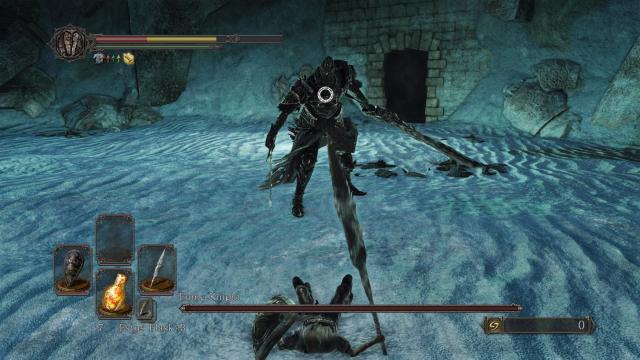
There's also a healthy amount of DLC to explore. Crown of the Sunken King sends players to Shulva, Sanctum City, where a series of underground monuments connect to the surrounding area via moveable platforms and buildings, creating one massive puzzle. Brume's Tower from Crown of the Iron King evokes painful memories of Demon's Souls' Tower of Latria, with an exponentially more horrifying boss waiting on the sidelines. Initially inspired by the Painted World of Ariamis, Crown of the Ivory King's Frozen Eleum Loyce is a desolate realm where powerful enemies lurk under the protection of a seemingly perpetual blizzard, before giving way to an even more poignant Dark Souls homage. Like most DLC, there's some great new content to discover (Yorgh's Spear is a game-changer), but what compels me is the lore it brings to the table. After receiving Vendrick's Blessing, the character is granted immunity to becoming Hollow. Is this merely an in-game boon to reward completionists, or had Vendrick truly discovered a way to break the cycle of Ages with a third answer that was lost to history?
One aspect of Dark Souls II that goes completely unappreciated is its story. For a sequel that everyone claims is out of sync with its predecessor, there are far more intimate connections between Dark Souls I and II than it gets credit for. Naturally, some are that brand of speculation we've all learned to apply concerning FromSoftware's lore ambiguity, but in this instance it's fun to try and put the pieces together because they fit so well, regardless of combination.
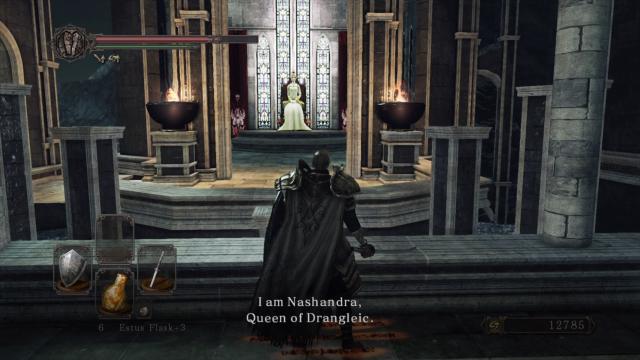
After the defeat of Manus, Father of the Abyss in Dark Souls, its soul was fractured into several pieces. One was claimed by the Chosen Undead, but the remaining four had plans of their own. Taking the forms of beautiful women, these fragments journeyed to lands unknown seeking to bind themselves to powerful kings (hence the DLC). The most successful of these was Nashandra, who entreated Vendrick, King of Drangleic to invade the 'Land of Giants' in order to secure a 'prize'. Shortly after, the Giants respond with an attack of their own, the Curse of the Undead breaks out in Drangleic, and from there the game unfolds.
Now the theories start: is the Land of Giants actually Lordran from Dark Souls? If so, how could the prize be anything other than the Lordvessel itself? This explains the four 'ineffable' Old Souls that reference the Lords of Dark Souls, but what about all the familiar equipment and spells that carried over to the sequel? Is this another gaming convention to be ignored, or was the kingdom of Drangleic built on the foundations of Lordran to begin with? Watching the initial cutscene, my thoughts were that it was all taking place in the protagonist's head, and that the entire ordeal is some lunatic's introspective journey inside themselves. I'm convinced this is true after writing about it – I just wasn't expecting the lunatic to be me!
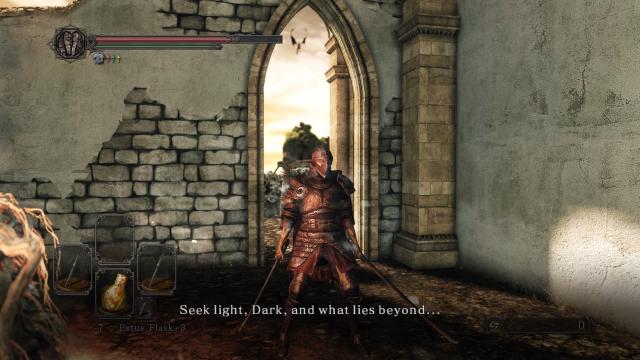
As I sit on the Throne of Want yet again, I can't help but feel satiated to some extent. It's ironic that almost everything I had issues with in Dark Souls II are the very reasons that make it compelling. I'm starting to enjoy the slower, more deliberate style of gameplay; it works against me more often than not, but from all this imbalance comes a harmony of sorts. As much as I complain about the changes, many of them were probably necessary – if not for balance purposes, then for the sake of its fanbase. When you have a bunch of maniacs who can beat the previous two games without levelling up, you're only going to keep them happy by making them completely miserable, something Dark Souls II does effortlessly. What's endearing to me is that this would be one of the last instances when FromSoftware would be brave enough to color outside of the lines. Afterwards, a 'comfort zone' of sorts would be established that even Elden Ring refused to step outside of. There's nothing wrong with it per se, but after seeing what Team Ninja was able to accomplish with the equation in a three-year timeframe, one has to wonder if FromSoftware has grown complacent in its success.
The next time you see or hear something bad about Dark Souls II... it's probably true. Just keep in mind that it's far easier being negative than it is to see the positive (especially online). There's plenty to love about Dark Souls II if you can look past everything in it designed to inspire hate. King Vendrick had the right idea about finding a third path; maybe it's not about being the 'best' or 'worst' in this case, but rather enjoying what's in front of you for what it is. Take the time to discover what makes Dark Souls II special and you'll understand why it continues to stand tall among a forest of giants.
Besides, like that time Reverse-Flash encountered Doctor Manhattan and claimed to have seen God, I think I know what Vendrick saw beyond the Ages of Fire and Dark: the Dream of the Nioh.
More Articles
I've bounced off DS2 at first after it was released, actually only played it for a few days and disliked it. Then much later I came back to it (and SotFS) and it became my favourite Souls... I'm not sure why, there was something in the DS2's setting and its decreasing health that just clicked right on my second try. Eventually I'll pay through them all again and see if it remains on top after that.
The biggest problem with DS2 by far is ADP. Fix that , and it becomes better than DS1 for me. DS3 would still be the king because of the bosses.
I started with prepare to die edition on PS3,
And I think ds2 is the strongest of the trilogy,
It didn't have much technical issue but the graphics department suffered for that.
Ds1 was a bit unpolished since it's demons souls multiplatform,
Ds3 was a fan service
While elden ring is way too big for its own good and overstayed its welcome.
Dark souls 2 setting was unique and the gameplay was a breath of fresh air!
Enjoyable read.
I seem to be very rare in being a Souls fan who prefers DS2 to the first game, but then I did play the series in an unusual order (DS2 then 3 then 1), so that might have something to do with it. I had no expectations from a prior entry that I felt it needed to live up to, and it didn't need to abide by some sort of unwritten ruleset for how Souls games should and should not go about inflating difficulty (multiple enemies, gank bosses, reduced max health on death, tying roll frames to Agility etc.).
I liked the setting more in DS2 and thought the lore was more interesting. DS1 with the fire going out and repeating nonsense never made sense to me lol.
What is a good game to pivot to after finishing Bloodborne? Is Demon Souls better played first on PS3 or PS5 ?
It's the best DS because it's the hardest. In the beggining is pure hell. You take some time to get strong and most of the stuff there are really annoying lol.








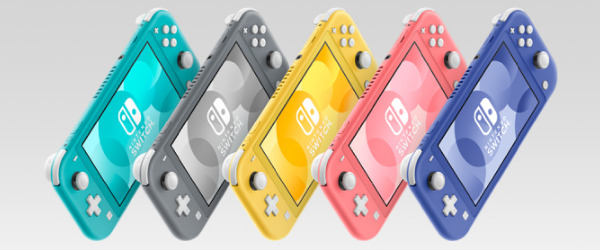
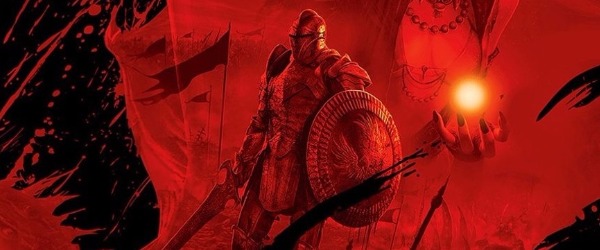
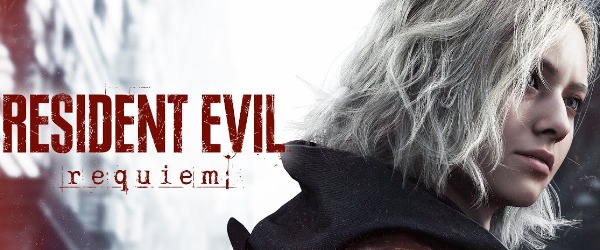
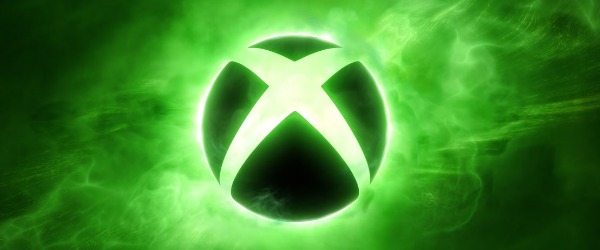










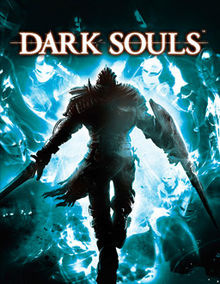

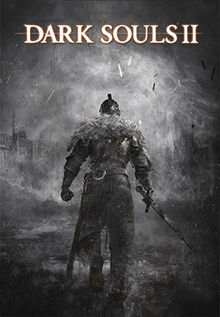
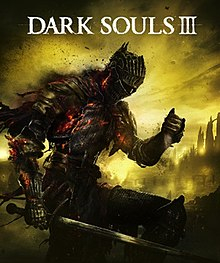
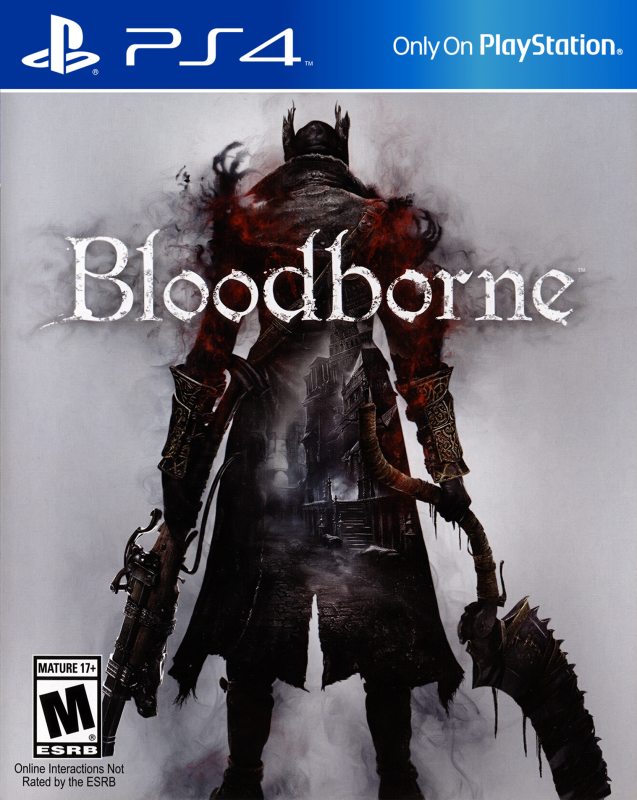

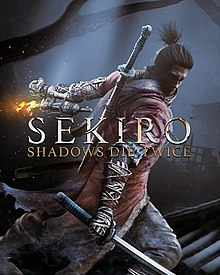
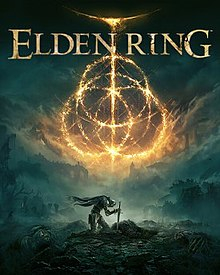
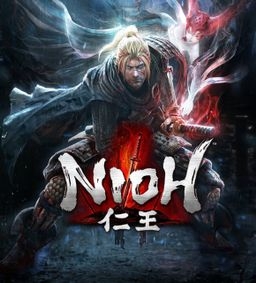
 Essay Pro
Essay Pro